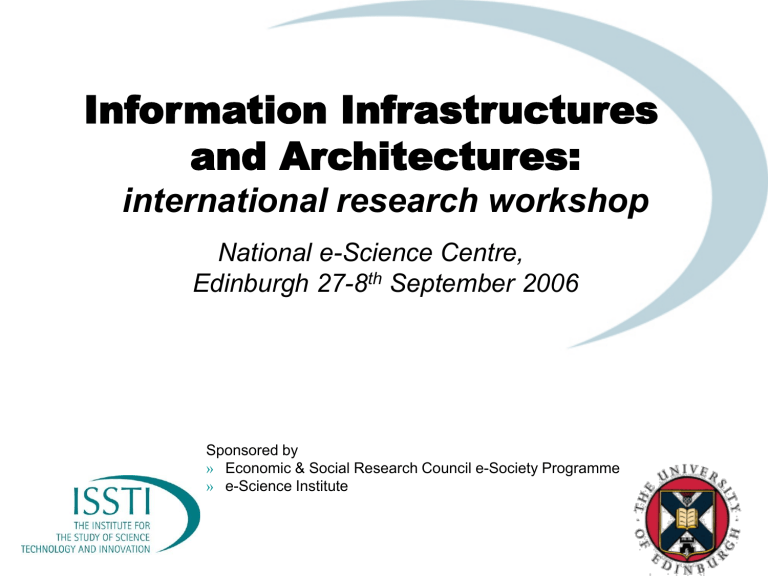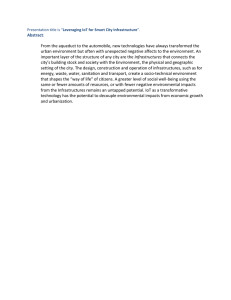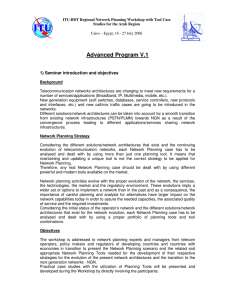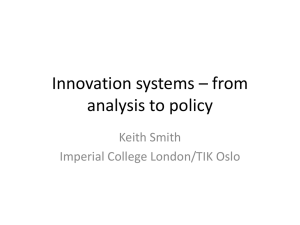Information Infrastructures and Architectures: international research workshop National e-Science Centre,

Information Infrastructures and Architectures: international research workshop
National e-Science Centre,
Edinburgh 27-8 th September 2006
Sponsored by
» Economic & Social Research Council e-Society Programme
» e-Science Institute
Introduction to the workshop
Prof Robin Williams
Director
Research Centre for Social Sciences,
Institute for the Study of Science
Technology and Innovation www.issti.ed.ac.uk
Goals of workshop
• Social science research into application and implications of ICTs tends to lag behind technological development
• Interdisciplinary workshop to explore the social science issues surrounding emerging information infrastructures
• Bring together social science specialists and technical experts to identify and assess new technological trends
Focus
• New developments: GRID; Service
Oriented Architecture; "SAP by the hour"
• Offer radically different architectures, development processes and service models
• (How) do these call into question social science knowledge - e.g re development
& implementation processes; re influence of various technical, managerial policy and lay actors
Social science focus
• Social shaping studies address character and implications of new technologies by analysing the array of actors involved and affected: how these are located in social structure
• Social/physical location important eg re knowledge flows
• How do radical changes in architecture alter array of players (eg new entrants) and reconfigure relationships between them?
• What implications for longstanding debates eg regarding
• user involvement;
• development processes;
• reconciling global & local requirements
Information Infrastructures
CHANGING DEFINITIONS
• II as network of networks (National)
Information Infrastructure (Clinton/Gore)
• II as everything: all the people, processes, procedures, tools, facilities & technology which support creation, use, transport & storage of information `(Pironti 2006)
• II as information space: Classification as part of the information infrastructure:
Bowker & Star Sorting Things Out
Information Infrastructures
REVIEW
• New Technologies/Architectures
• New service concepts
• New business models
ASSESS
• Promises; likely trajectories
• Little implementation experience
• What implications for innovation processes and players?
Wednesday 27th September
UNDERSTANDING CHANGE IN ARCHITECTURES –
TRAJECTORIES, PROMISES
• Lessons from history – Mike Martin, University of
Newcastle
• Infrastructures and Architectures - post the .com hype and crash - Alex Voss, University of
Edinburgh
• Reasons in the context of enterprise services -
Thomas Wieberneit, SAP Labs Canada, Montreal
• Grid futures - Jennifer Schopf –e-Infrastructure
Policy Adviser, National E-Science Centre
Thursday 28th September
MORNING
NEW SERVICE MODELS; IMPLEMENTATION, USERS
• Andrew Ginty - End-user impacts - IBM Global
Business Services
• 3G Grids and 3G Innovation Policy: observations from one international eSocial Science collaboration - Ashley Lloyd – Edinburgh
Management School
• Shared services – James Cornford – University of
Newcastle
Thursday 28th September
AFTERNOON
IMPLICATIONS FOR INNOVATION PROCESSES AND
PLAYERS
• Understanding the shaping of future information systems Øle Hanseth – University of Oslo
• Future research issues and agendas - Eric
Monteiro – Norwegian University of Science and
Technology
How we proceed?
• Round table
Keynote presentations
Kick off wider discussion
• Powerpoints to go onto web (OK?)
• Possibility of joint special issue with US colleagues of Journal of the Association
of Information Systems on information infrastructures



